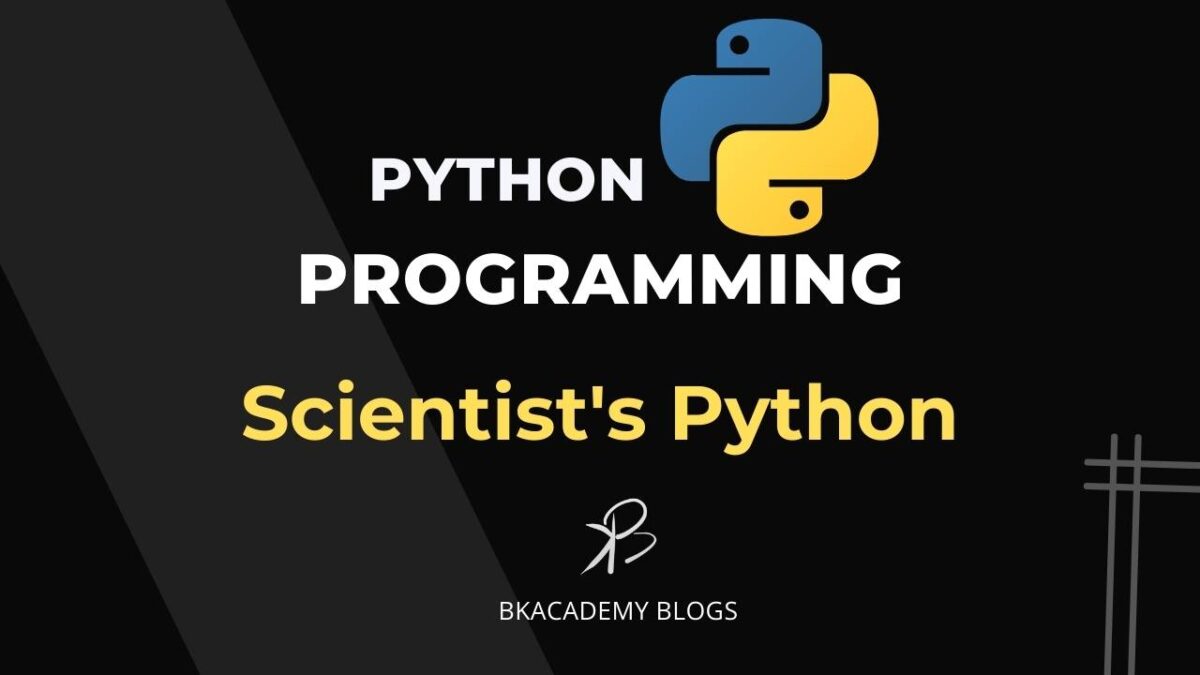In the digital era, where data reigns supreme, Python and data science together form a dynamic duo, much like a detective pair solving complex mysteries. This intersection has been a game-changer in extracting insights and making data-driven decisions. But what makes this collaboration so powerful, and why should you care? Let's unravel this digital conundrum!
Python and Data Science: A Match Made in Digital Heaven
Imagine if Sherlock Holmes met a supercomputer and they decided to solve mysteries together; that's kind of what happens when Python and data science team up. Python's simplicity, readability, and vast array of libraries make it a favorite for data scientists. It's like having a key that opens many doors, each leading to different realms of data analysis, machine learning, and artificial intelligence.
youtube video on complete introduction to python for science and engineering 👇
Why Python?
So, what makes Python the Watson to our data-driven Holmes? Here are a few reasons:
- Simplicity & Readability: Python's syntax is clean and straightforward, making it easily readable and fast to write. It's like reading plain English, which means you spend less time deciphering code and more time deriving insights.
- Robust Libraries: The real treasures in Python’s kingdom are its libraries. Pandas for data manipulation, NumPy for numerical computations, Matplotlib for visualization, and Scikit-learn for machine learning are just the tip of the iceberg. These libraries are continually evolving, much like a digital library that keeps getting new editions of books.
- Community & Support: Python boasts a growing community that contributes to its vast array of libraries and frameworks. Got an error at 2 a.m.? Fear not! Chances are someone has already found a solution to your problem. The Python community is like having a 24/7 study group.
Real-world Applications at the Crossroads
This partnership isn't just theoretical; it's practical and thriving in the real world. Here’s how:
- Healthcare: Python is used in predicting patient outcomes, understanding disease patterns, and personalizing treatment plans. It's like having a digital doctor making rounds in the hospital.
- Finance: Algorithms developed using Python help in forecasting stock prices, detecting fraud, and automating trading activities. It's akin to having a financial advisor on speed dial.
- Retail: Python helps retailers understand their customers’ behaviors, predict trends, and optimize pricing strategies. Think of it as having a personal shopper guiding your retail experience.
Embarking on Your Journey
Intrigued and ready to dive in? Whether you're a newbie or a seasoned professional looking to upgrade your skills, numerous resources can help you navigate this intersection. Platforms like Coursera, edX, and Udacity offer comprehensive courses on Python for data science. For more hands-on learning, websites like LeetCode and HackerRank provide practical challenges.
Conclusion: Converging Paths, Unleashing Possibilities
The crossroads of Python and data science is a land of endless opportunities. As data continues to sculpt our future, the blend of Python's programming prowess and data science's analytical power is instrumental in turning raw data into insightful narratives. So, why wait? Embark on this exciting journey, and who knows, you might just be the one solving the next big mystery of the digital age!
For help in modelling in any FEA, FDTD, DFT Simulation / Modelling work, you can contact us (bkacademy.in@gmail.com) or in any platform.
Interested to Learn Engineering modelling? Check our Courses?
check out our YouTube channel
u can follow us on social media
Share the resource
-.-.-.-.-.-.-.-.-.().-.-.-.-.-.-.-.-.-
© bkacademy
